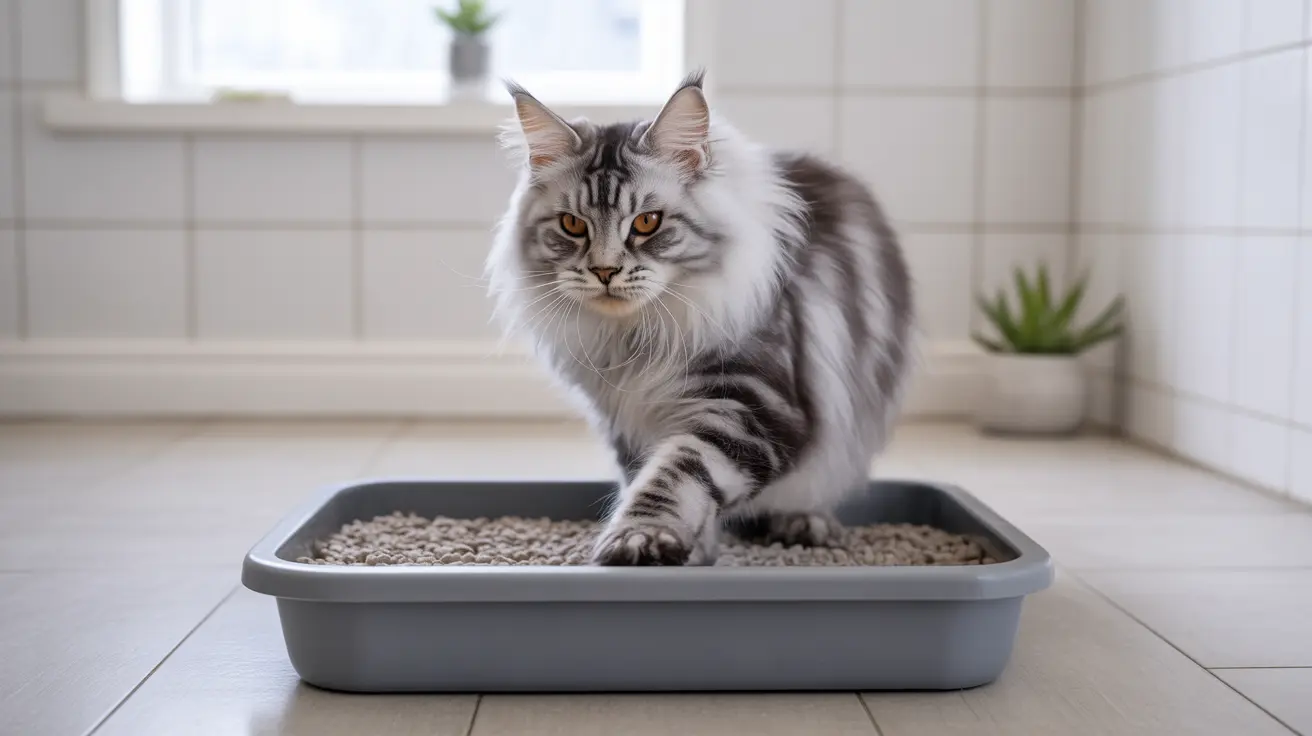Setting Up for Success
The foundation of successful litter training starts with proper setup. Choose a large, low-sided litter box that accommodates your older cat's mobility needs. Senior cats, especially those with arthritis, benefit from easy entry and exit points.
Place the litter box in a quiet, accessible location away from food and water bowls. For multi-level homes, provide a box on each floor to ensure your cat always has convenient access.
Essential Supplies Checklist
- Large, shallow litter box with low sides
- Unscented, clumping cat litter
- Enzymatic cleaner for accidents
- Treats for positive reinforcement
- Multiple boxes for multi-cat households
Choosing the Right Litter and Box
Select fine-grained, unscented litter that mimics natural outdoor textures. This familiarity can help outdoor cats transition more easily to indoor litter box use. Maintain a consistent litter depth of 2-3 inches, adjusting based on your cat's preferences.
For cats transitioning from outdoor habits, you might start with a mixture of soil and cat litter, gradually increasing the proportion of litter over time.
Training Techniques and Tips
Begin training by placing your cat in the litter box after meals, naps, and play sessions. These are natural times when cats typically need to eliminate. Offer immediate praise and treats when your cat uses the box correctly.
Establishing a Routine
- Monitor your cat's behavior for signs they need to eliminate
- Guide them to the litter box at regular intervals
- Maintain consistent feeding times to establish predictable bathroom patterns
- Clean the box daily to encourage regular use
Managing Common Challenges
Older cats may face specific challenges when learning to use a litter tray. Medical issues, stress, or previous habits can all impact training success. If your cat consistently avoids the litter box, consult your veterinarian to rule out health concerns.
Address accidents promptly using enzymatic cleaners to prevent remarking. Never punish your cat for mistakes, as this can create negative associations with the litter box.
Maintaining Long-term Success
Once your cat begins using the litter tray regularly, maintain consistent cleaning habits and location. Sudden changes can disrupt established patterns. Continue positive reinforcement to strengthen good habits.
Frequently Asked Questions
How can I train an older cat to start using a litter tray effectively?
Focus on providing an easily accessible litter box, using appropriate litter, and maintaining a consistent routine. Reward successful use with treats and praise while keeping the box clean and inviting.
What type and size of litter box is best for older cats with arthritis or mobility issues?
Choose a large, shallow box with low sides for easy access. Some seniors benefit from boxes with a lowered entry point or ramp. Ensure the box is wide enough for comfortable movement.
How do I transition an outdoor or previously untrained older cat to indoor litter box use?
Start by mixing familiar outdoor substrate with cat litter, gradually increasing the litter proportion. Place boxes in quiet locations and maintain strict cleaning routines to encourage regular use.
What are the best litter types and depths to encourage older cats to use the litter tray?
Use unscented, fine-grained clumping litter at a depth of 2-3 inches. Some cats prefer less depth, so observe your cat's preferences and adjust accordingly.
How should I handle accidents and maintain hygiene while training an older cat to use the litter box?
Clean accidents immediately with enzymatic cleaners to remove all traces of odor. Maintain daily litter box cleaning routines and replace litter completely every 1-2 weeks.
Remember, patience and consistency are key when training an older cat to use a litter tray. With proper setup, positive reinforcement, and attention to your cat's individual needs, most senior cats can successfully adapt to litter box use.






